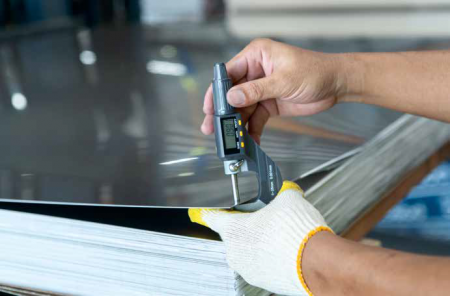The fire at Grenfell Tower has exposed serious weaknesses in the regulation of construction activity and construction products. Ordered in the wake of disturbing evidence heard from material manufacturers at the public inquiry, the government has recently published Paul Morrell's long-awaited independent review of the construction product testing regime.
The review recommends a series of sweeping reforms aiming to ensure products used on buildings are safe – with a major shake-up in the regulatory system likely to follow. The Grenfell Tower tragedy and the failings it has laid bare have made clear the imperative for change. The UK's exit from the EU provides an opportunity to look again at the whole system of construction product regulation and how it might be both simplified and strengthened.
As the government's first Chief Construction Advisor, Paul Morrell co-chaired the 174-page review with construction legal expert Anneliese Day KC. It provides advice on how the new National Regulator for Construction Products (CPR), based in the Office for Product Safety within the Department for Business and Trade, will work with the new Building Safety Regulator, based in the Health and Safety Executive.
Currently, it is estimated that only a third of all construction products in manufacture are covered by the regulator, leaving around 20,000 to 30,000 products unregulated. Some products not currently covered will be brought into the CPR regime by a new designated standard or by being added to a list of 'safety-critical' products to be set out in regulations by the Secretary of State.
The report issued a 'call for honesty' on the part of manufacturers and 'full disclosure' to the approved body conducting the product assessment. Manufacturers will be required to share all technical documentation and information with the regulator and enforcement authorities, including all marketing materials and other communications relating to products. A breach of any part of this duty would be an offence subject to new sanctions available to the regulator with effective enforcement action being taken.
The report strongly criticises the current enforcement system, which it says appears to have not made a single prosecution since it was enacted in 2011 and carried out only a limited number of investigations. It added that there is no centralised database of products that might represent a risk.

In a statement to the House of Commons, Housing Secretary Michael Gove, said: "We recognise that more needs to be done and are carefully considering the recommendations put forward by the independent reviewers. I will also consider how our regulatory regime can ensure that only responsible businesses can make and sell construction products. It is unacceptable that cladding and insulation manufacturers have neither acknowledged their part in the legacy of unsafe buildings in the UK or contributed to the cost of remediating buildings."
Judith Hackitt, who authored the landmark 2018 report Building a Safer Future in the wake of the disaster, said the report marked a major step forward: "Paul Morrell and Anneliese Day are to be commended. We must move from a state where up to two-thirds of products are unregulated, there is lack of clarity around purpose of testing, the fitness for purpose of current standards is questioned and there is no enforcement to implement a process that delivers quality and confidence."
Morrell and Day also looked into the history of the UK regulatory regime and how it had led to the Grenfell fire. They said the outsourcing of regulations to the European Union following the publication of the Construction Products Directive in 1988 had led to a 'hollowing out' of expertise. "The CPR assessment process is so complex that few people properly understand it and there is a concerning disconnect between those involved in the assessment process and those who design and construct buildings," the report says. "The criteria by which products are directed towards the different levels of this system are also unclear, and sometimes inconsistent. This renders the process opaque and a system that cannot be readily understood is unlikely to be routinely observed and enforced, providing an opportunity for those who may seek to take advantage of a lack of transparency."
The report also suggests there was a lack of understanding between the government and the UK Accreditation Service (UKAS), which regulates testing bodies, over what had gone wrong in the process that led to the Grenfell fire.
To download the full review, go to: www.gov.uk/government/publications/independent-review-of-the-construction-product-testing-regime









